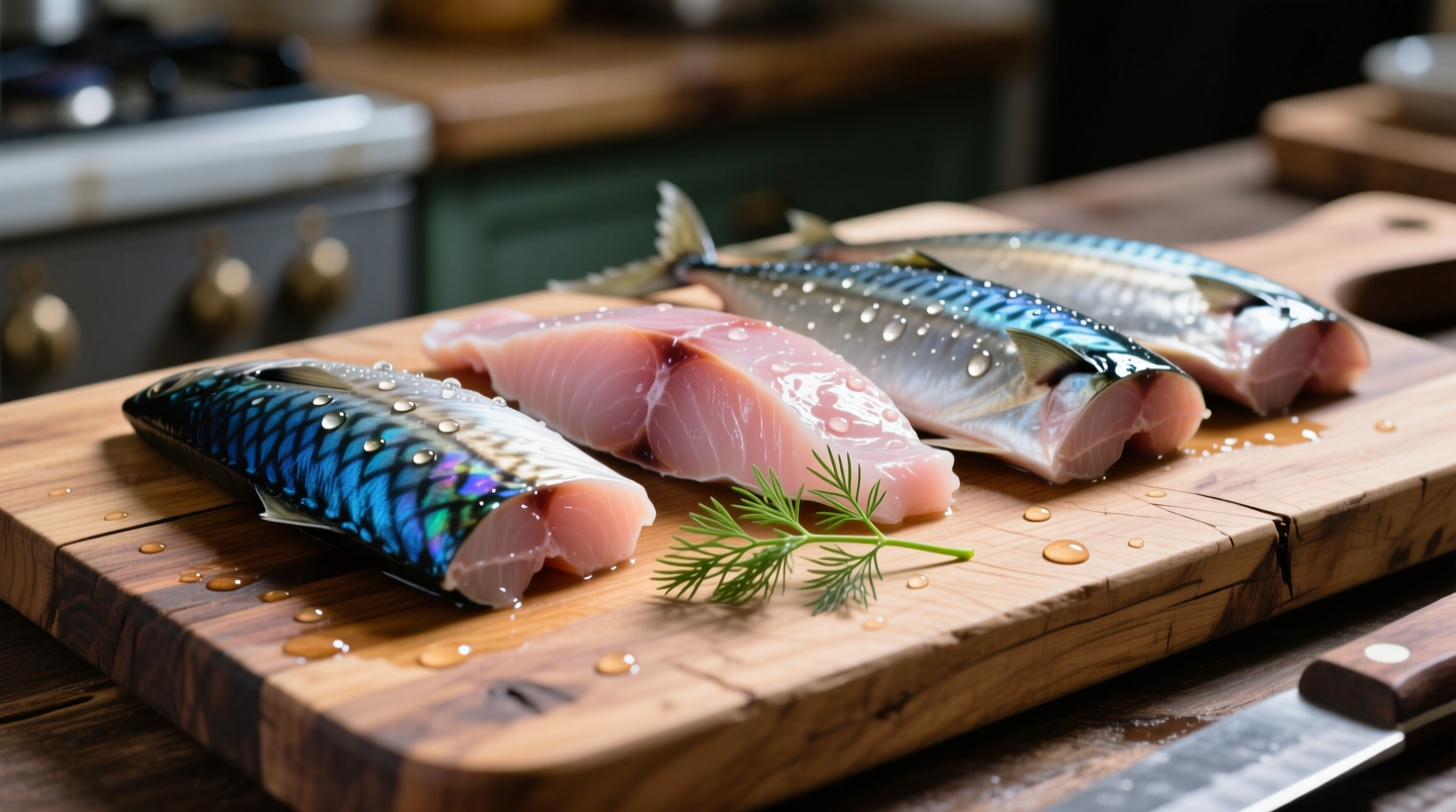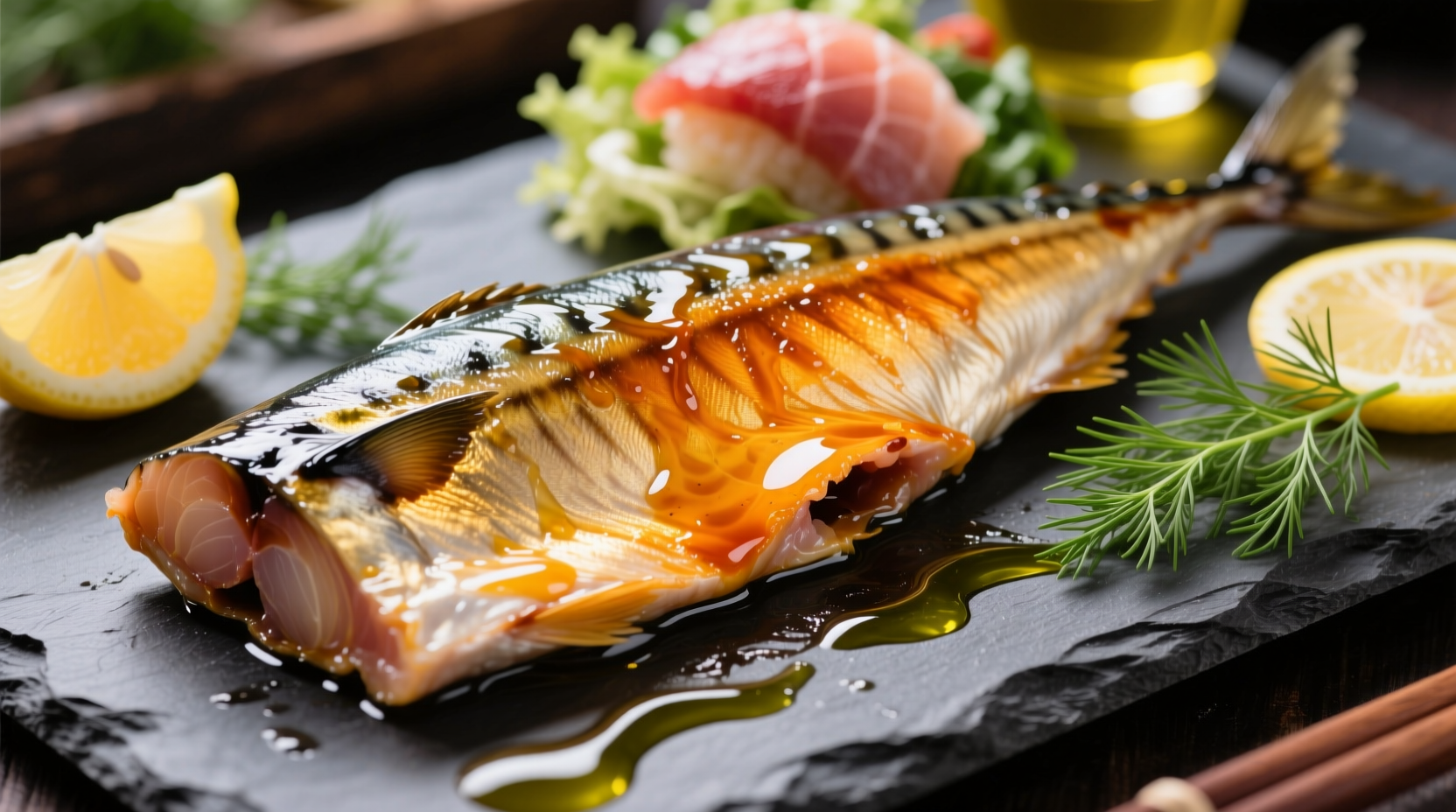If you're wondering what does mackerel taste like, here's the direct answer: Mackerel has a rich, oily flavor with a pronounced fishiness that's stronger than salmon but less intense than sardines. Its high fat content (about 12-18%) creates a buttery texture that becomes delightfully crispy when grilled, while the flesh remains moist and flaky. Fresh mackerel should have a clean ocean scent without excessive 'fishy' notes, and its taste profile balances savory umami with subtle sweetness.
As someone who's cooked mackerel in Michelin-starred kitchens and humble seaside shacks alike, I've discovered that understanding what does mackerel taste like unlocks a world of culinary possibilities. Whether you're a seafood novice or an experienced cook, recognizing mackerel's distinctive flavor profile helps you prepare it perfectly every time. Let's explore exactly what to expect from this nutrient-dense fish and how to make the most of its unique characteristics.
Breaking Down Mackerel's Flavor Profile
Mackerel's taste experience operates on multiple sensory levels. The initial impression is a robust oceanic flavor, followed by a rich, oily mouthfeel that coats the palate. Unlike leaner fish, mackerel's high fat content—nearly double that of salmon—creates a luxurious texture that many describe as "buttery." This oiliness serves a practical purpose: it preserves the fish's moisture during cooking, making mackerel remarkably forgiving to prepare.
When perfectly fresh, mackerel offers a clean, briny taste reminiscent of the sea without overwhelming fishiness. The flesh should appear glossy and deep pink to coral-colored, with firm texture that springs back when pressed. Any strong 'fishy' odor indicates the fish is past its prime—fresh mackerel smells like clean seawater, not a fish market.

Mackerel vs. Other Popular Fish: A Taste Comparison
Understanding what does fresh mackerel taste like becomes clearer when comparing it to familiar fish varieties. The table below shows how mackerel's flavor intensity and oil content stack up against common alternatives:
| Fish Type | Flavor Intensity (1-10) | Oil Content | Texture | Best Cooking Methods |
|---|---|---|---|---|
| Mackerel | 7 | Very High (12-18%) | Firm, meaty, flaky | Grilling, smoking, pan-searing |
| Salmon | 5 | High (10-14%) | Buttery, tender | Baking, grilling, poaching |
| Sardines | 8 | High (10-15%) | Soft, delicate | Grilling, canning, broiling |
| Tuna | 4 | Medium (2-8%) | Firm, steak-like | Seared, raw (tartare), grilled |
| Cod | 2 | Low (0.5-2%) | Flaky, delicate | Baking, frying, poaching |
This comparison helps answer the common question: is mackerel a strong tasting fish? Yes, but in the best possible way—it delivers robust flavor that stands up to bold seasonings without disappearing into the background of your dish.
Factors That Transform Mackerel's Taste Experience
The exact flavor of mackerel depends on several key factors that every cook should understand. According to NOAA's Atlantic mackerel species profile, different mackerel varieties exhibit distinct flavor nuances:
- Atlantic mackerel: The most common variety with balanced oiliness and moderate fishiness
- Spanish mackerel: Slightly sweeter with less oil content than Atlantic varieties
- King mackerel: Stronger flavor profile, higher mercury content (best consumed occasionally)
Freshness: The Critical Flavor Determinant
Nothing affects what does mackerel taste like more than freshness. Mackerel is highly perishable due to its oil content, which oxidizes quickly. The National Oceanic and Atmospheric Administration recommends consuming mackerel within 1-2 days of capture for optimal flavor. Signs of peak freshness include:
- Bright, clear eyes (not cloudy)
- Firm flesh that springs back when touched
- Shiny, metallic skin with no discoloration
- Clean ocean scent (avoid any strong ammonia odors)
Cooking Methods That Enhance Mackerel's Natural Flavor
How you prepare mackerel dramatically impacts its final taste. Professional chefs know that certain techniques minimize potential fishiness while maximizing mackerel's delicious qualities:
- Grilling over high heat: Creates a crispy skin that contrasts beautifully with the moist interior while reducing perceived fishiness through caramelization
- Marinating in acidic ingredients (citrus, vinegar): Cuts through oiliness and balances flavors—try 30 minutes with lemon juice and herbs
- Smoking: Transforms mackerel into a delicacy with complex flavor notes (cold smoking preserves more moisture than hot smoking)
- Avoiding overcooking: Mackerel's high fat content means it cooks faster than lean fish—remove from heat when internal temperature reaches 125°F (52°C)
Perfect Pairings: Complementing Mackerel's Distinctive Flavor
Understanding mackerel flavor profile explained helps you create harmonious dishes. Mackerel's rich, oily nature pairs exceptionally well with:
- Acidic elements: Lemon, vinegar, pickled vegetables cut through the oiliness
- Bitter greens: Arugula, radicchio, or endive balance the richness
- Strong herbs: Dill, rosemary, and thyme stand up to mackerel's bold flavor
- Mustard-based sauces: Complement without overwhelming the fish
Avoid delicate flavors that mackerel will overpower. Instead of subtle white wine sauces that work with cod, opt for robust preparations like miso glaze or chimichurri that match mackerel's intensity.
Addressing Common Mackerel Misconceptions
Many people avoid mackerel based on misunderstandings about its taste. Let's clarify some persistent myths:
Myth: "Mackerel always tastes too fishy"
Reality: Only when not fresh. Properly handled mackerel has a clean, oceanic flavor without excessive fishiness. The University of California Sea Grant program confirms that proper icing and rapid processing eliminate off-flavors.
Myth: "Mackerel is too oily to enjoy"
Reality: That oil contains valuable omega-3 fatty acids and creates a luxurious texture. Chefs actually prize mackerel for this quality—it's why the fish remains moist even when slightly overcooked.
Myth: "Mackerel tastes the same whether fresh or frozen"
Reality: Freezing affects texture and flavor. The Food and Agriculture Organization notes that flash-freezing preserves quality better than slow freezing, but fresh mackerel always delivers superior flavor complexity.
Practical Tips for First-Time Mackerel Eaters
If you're trying mackerel for the first time and wondering what does mackerel taste like compared to salmon, follow these tips for the best experience:
- Start with skin-on fillets—the crispy skin adds texture contrast that balances the rich flesh
- Try it simply prepared with just salt, pepper, and lemon to appreciate its natural flavor
- Pair with a crisp white wine like Sauvignon Blanc that cuts through the oiliness
- Look for mackerel labeled "day boat" or "same-day catch" for maximum freshness
- Ask your fishmonger to scale and gut the fish properly—residual bloodline can increase fishiness
Remember that mackerel's flavor becomes more pronounced as it ages, so consume it quickly after purchase. When prepared properly, mackerel offers one of the most satisfying seafood experiences available—a perfect balance of rich flavor, healthy fats, and versatile cooking potential.











 浙公网安备
33010002000092号
浙公网安备
33010002000092号 浙B2-20120091-4
浙B2-20120091-4